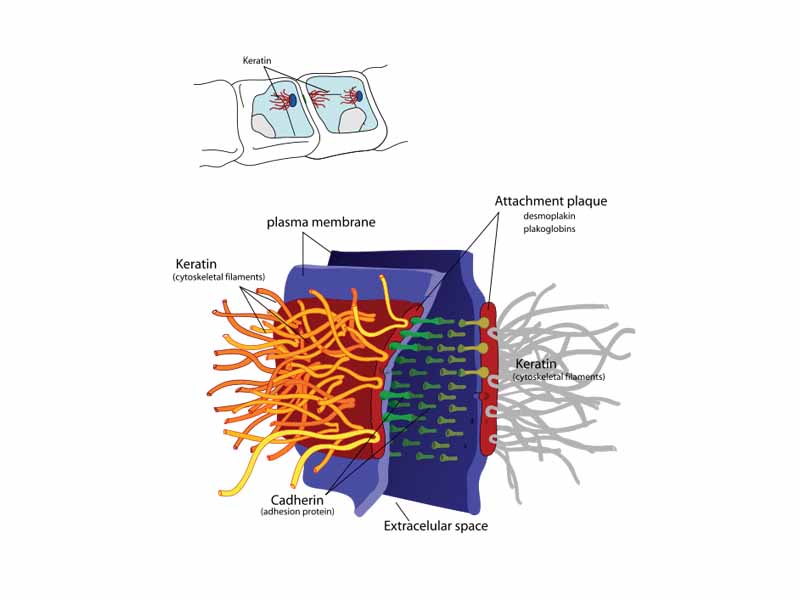Interdisciplinary Note (2 of 15)
Examples of structural proteins include collagen, elastin, proteoglycans, and fibronectin. Collagen plays many diverse rolls in physiology, from providing strength to tendons and ligaments, serving as the matrix for bone deposition, and forming the filtration membranes in the glomeruli of kidneys. Elastin is found in the walls of blood vessels and in ligaments. Consisting of about 95% polysaccharide (glycosaminoglycans), 5% protein, proteoglycans serve as the ground substance (extracellular medium) of many types of connective tissue.
The adhesive cell surface proteins fibronectin and laminin bind the external faces of the cell membranes to collagen and other components of the extracellular matrix. Other cellular adhesion molecules such as cadherins, selectins, immunoglobulin superfamily, and integrins play a role in cellular anchorage to the extracellular matrix in connective tissue or cell-cell attachment in epithelial tissue.
In other words, connective tissue proteins and proteins for cellular adhesion and anchorage are right at the bridge between the cellular level of organization and the tissue level. This is also one of the conceptual bridges that you cross between premedical, undergraduate level science and medical school level. The epithelial–mesenchymal transition (EMT) is a good example of the kind of process you are laying the groundwork to conceptualize in medical school. EMT is a process by which epithelial cells lose their cell polarity and cell–cell adhesion, and gain migratory and invasive properties. EMT is essential for numerous developmental processes such as neural tube formation. EMT is also a crucial step in the initiation of metastasis for many types of cancer. EMT would be a typical MCAT passage subject, right on the edge of expected foreknowledge, the kind of thing they throw you into to see if you can find your footing.
